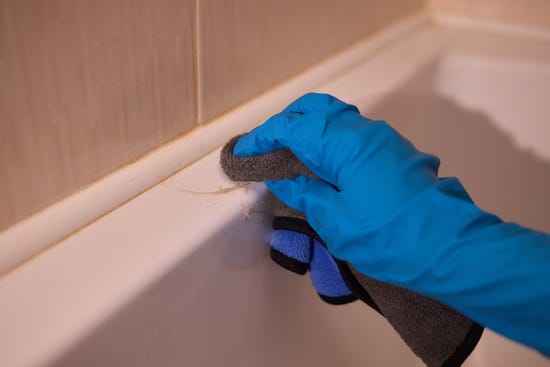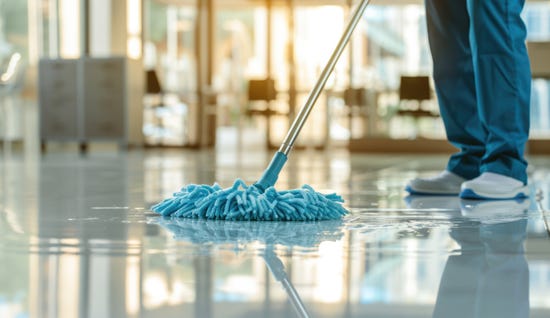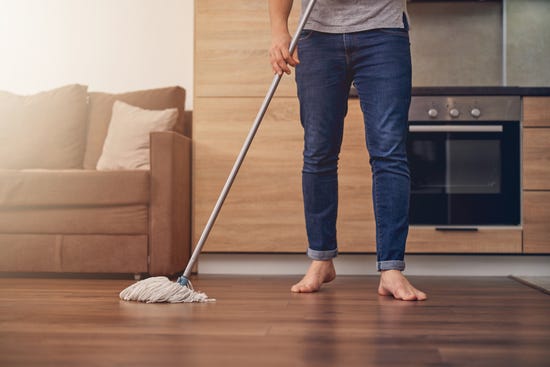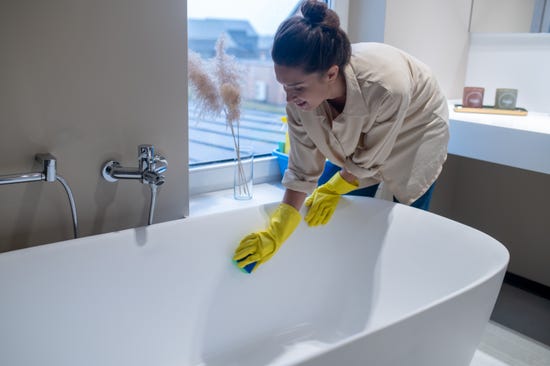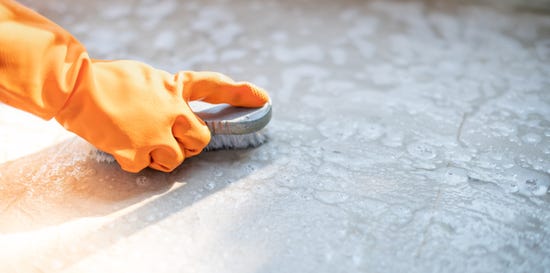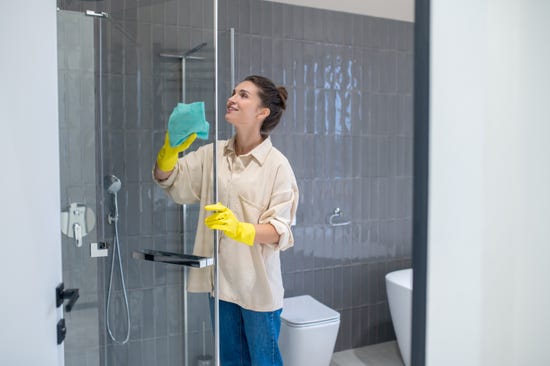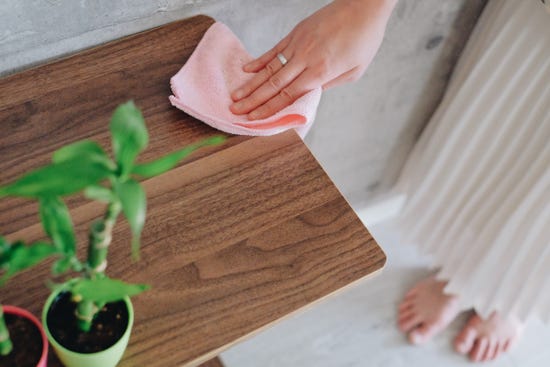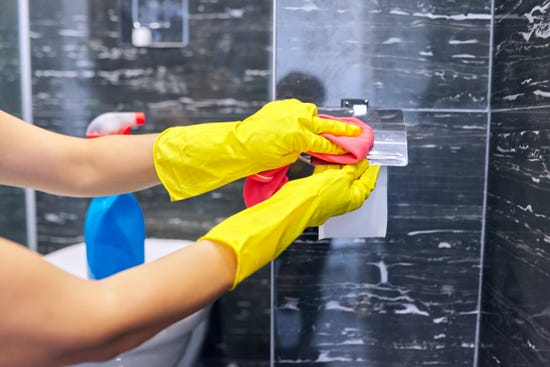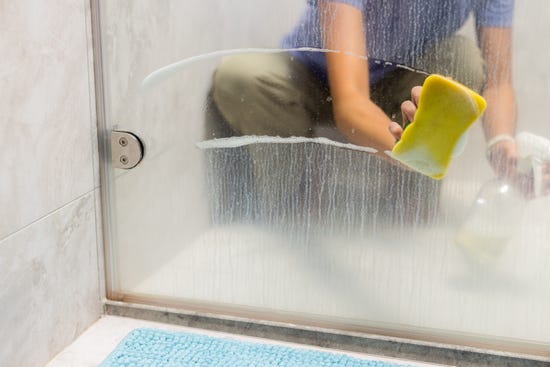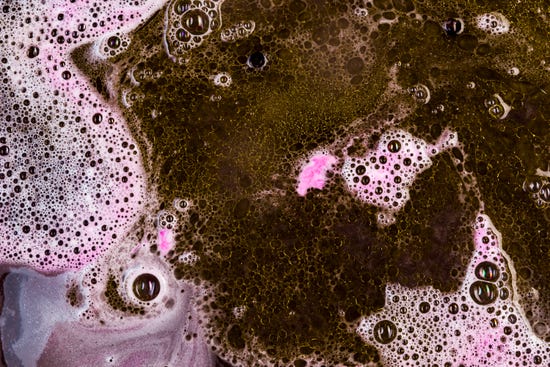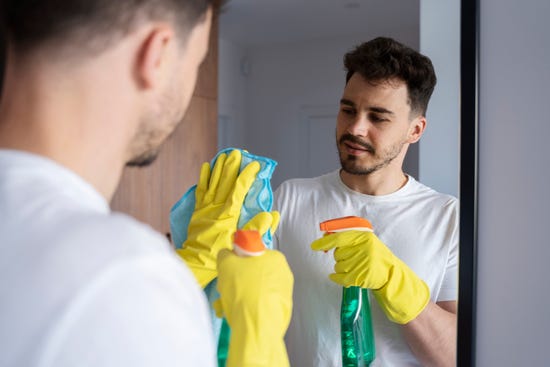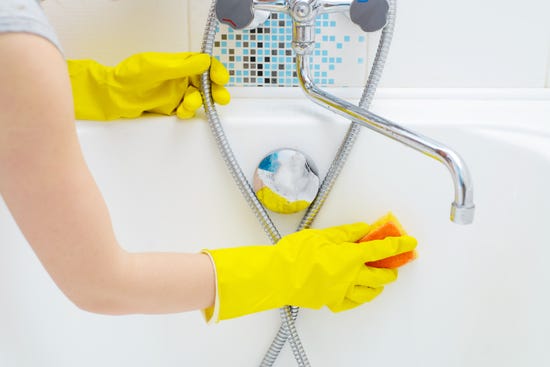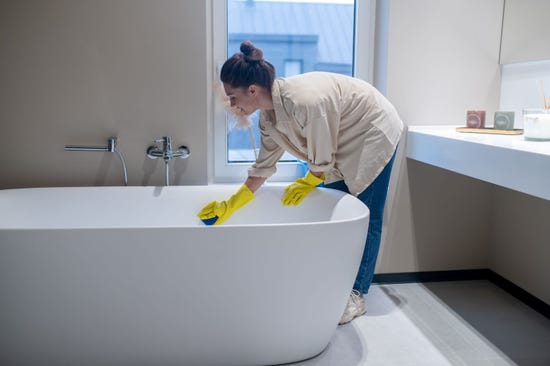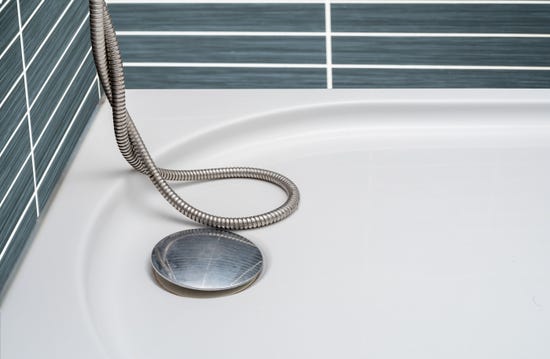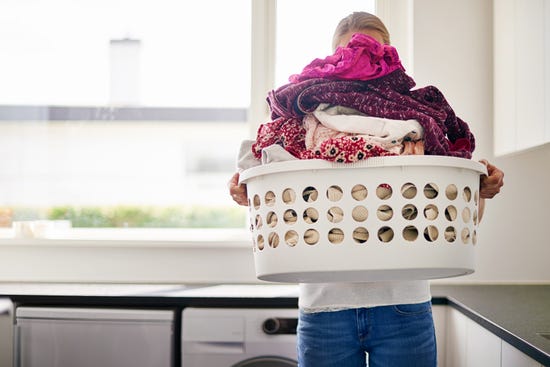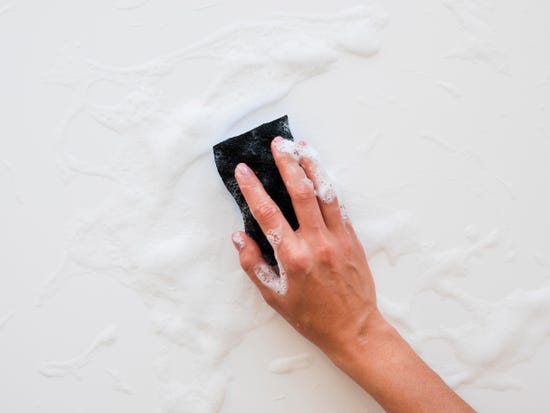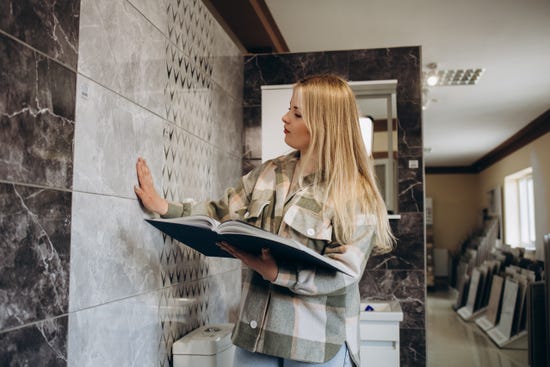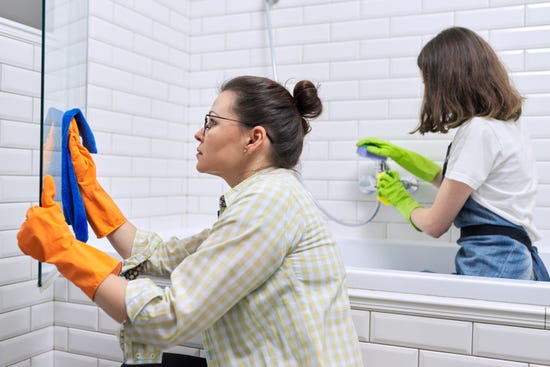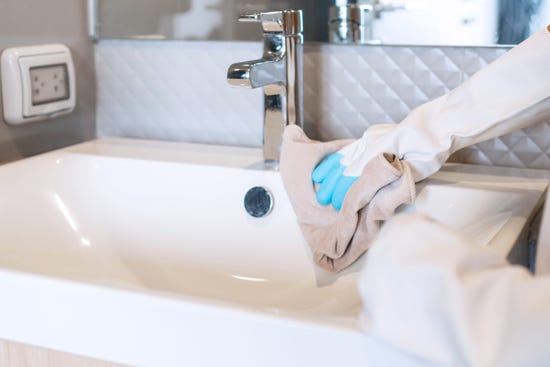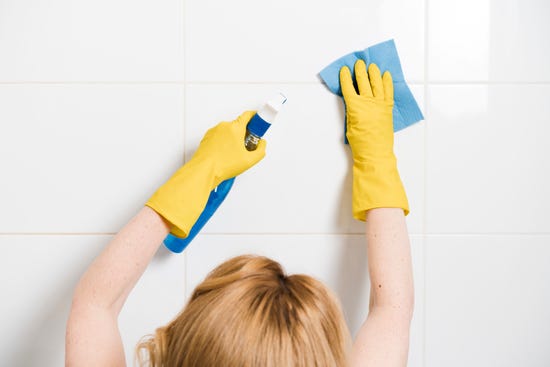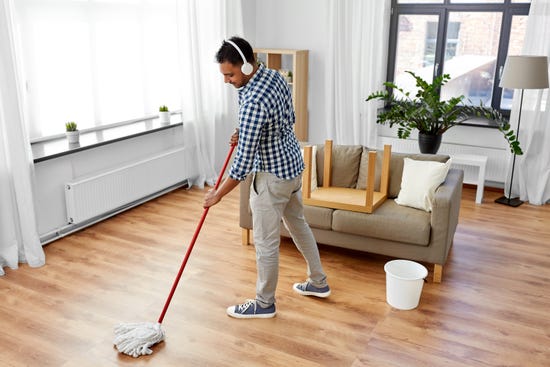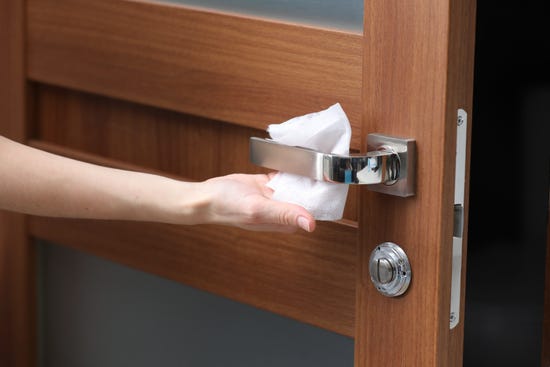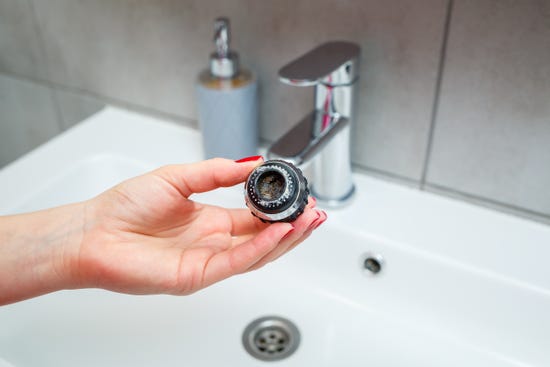
How To Get Rid of Toilet Ring Stains
How To Get Rid of Toilet Ring Stains
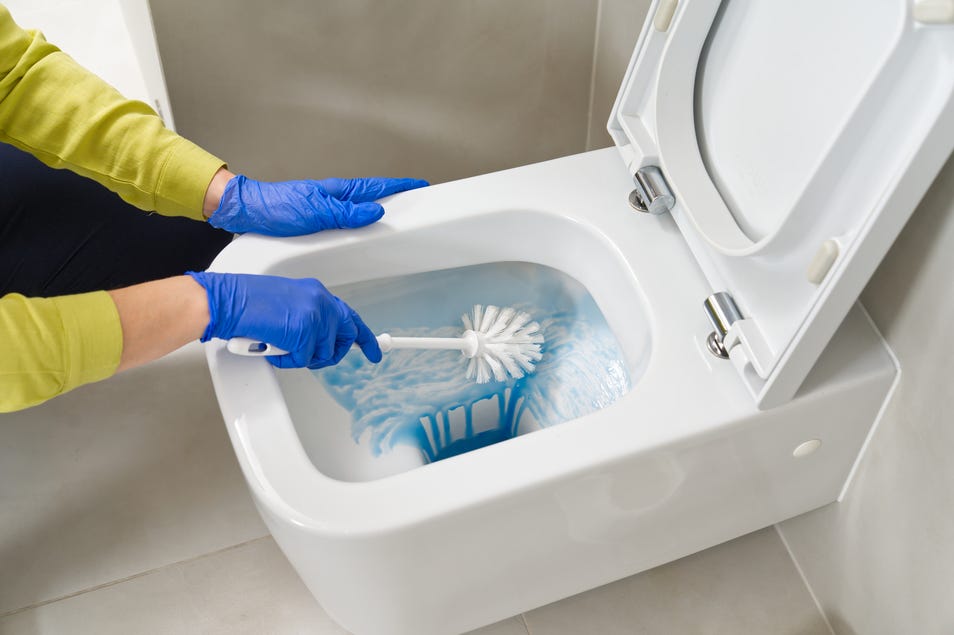
Toilet bowl rings, although common, are always a frustrating sight in any bathroom. No matter how clean the rest of your home is, these stubborn, unsightly rings clinging to the inside of your toilet can make your bathroom look neglected—but now you can consider them gone for good!
With some easy-to-follow steps and Lysol® cleaning products, tackling the toughest toilet ring stains has never been easier. That’s right! You don’t have to be a certified professional cleaner or use any harsh chemicals to banish them for good.
This guide explains what causes these stains and how to get rid of toilet ring stains, helping you maintain a consistently clean and fresh bathroom.
What causes toilet ring stains?
Various factors can contribute to the unsightly ring around your toilet bowl, including:
1. Hard water or well water
The most common reason for toilet rings to appear is that the mineral-rich hard water often leaves behind calcium, magnesium, and iron deposits. Over time, these minerals settle along the waterline, forming a crusty ring. This buildup can appear brown, reddish, or gray depending on the mineral content in your local water supply. Use Lysol® Toilet Bowl Cleaner - Deep Reach to eliminate these mineral deposits from the toilet bowl, preventing the formation of the toilet ring stains.
2. Bacteria growth
Bacteria can do more than cause disease—they can also cause your toilet to appear dirty. Certain bacteria, like Serratia Marcescens, thrive in damp, low-flow toilets and produce a reddish-orange pigment called prodigiosin, which is responsible for forming a slimy ring. Use Lysol® Toilet Bowl Cleaner - Power to disinfect and kill 99.99% of viruses and bacteria.
3. Mold and mildew
Wherever there’s moisture, mold and mildew can lurk, and your toilet is no exception. These fungi thrive in humid environments and can create dark, green, or black rings inside the bowl. Spray Lysol® Bathroom Cleaner - Bleach Cleaner in the toilet bowl to remove mold and mildew.
4. Limescale
Limescale, primarily caused by mineral buildup in hard water, can combine with substances like dirt, urine, mildew, and bacteria to form brown or black stains, resulting in stubborn toilet ring stains. Spray Lysol® Bathroom Foam Cleaner - Summer Fresh in the toilet bowl to cut through soap scum and limescale.
5. Calcium deposits
Minerals in hard water, such as calcium and magnesium, are left behind as the water evaporates or sits in the bowl, gradually accumulating into a visible ring at the waterline. Use Lysol® Toilet Bowl Cleaner - Hydrogen Peroxide ActionTM to cut through calcium deposits with the power of hydrogen peroxide.
What you’ll need
Before you get started, make sure you have the following with you:
- Lysol® Toilet Bowl Cleaner - Power
- Toilet brush
How to clean toilet bowl rings?
Follow the instructions below to remove toilet bowl rings:
- Wear a face mask and rubber gloves to protect yourself from chemicals, and ensure the bathroom is well-ventilated.
- Flush once to wet the sides of the bowl. This helps the cleaner spread more evenly and prevents unnecessary dilution of the cleaning solution.
- Press the sides of the cap on Lysol® Toilet Bowl Cleaner - Power and twist counterclockwise to open. Squirt the toilet cleaner around the inside rim of the bowl, allowing it to drip down and coat the surface. Cover all stained and dirty areas, especially under the rim and around the waterline.
- Allow the cleaner to sit for 5–15 minutes (or as directed on the label). This gives the chemicals enough time to remove toilet bowl rings, tough hard water stains, rust stains, and mineral deposits, while also disinfecting and killing 99.99% of viruses and bacteria.
- Use a toilet brush to rigorously scrub the entire bowl, focusing on stubborn stains and hidden areas under the rim. Make sure to clean down into the water hole and trap.
- Once scrubbing is complete, flush the toilet to rinse away the cleaner and loosened grime. Repeat if necessary for tough stains.
For ongoing protection against toilet ring stains, consider using Lysol® Automatic Toilet Bowl Cleaner – Click GelTM. This easy-to-use gel clings to the inside of the bowl, releasing a fresh scent and powerful cleaning agents with every flush. Not only does it help maintain a clean toilet, but it also prevents future buildup, making it a convenient, hands-free solution to keep your toilet sparkling and smelling fresh between deep cleans.
FAQs
Are toilet ring stains harmful?
Toilet ring stains are generally not harmful to humans, but they are unsightly and may indicate bacteria or mold buildup, which can affect hygiene if left untreated.
How often should I clean my toilet to prevent ring stains?
To prevent toilet ring stains, mineral deposits, and bacterial buildup, it is advisable to clean your toilet at least once a week.
How often should I clean my toilet to remove germs?
To keep germs at bay, it’s recommended to clean and disinfect your toilet at least once a week, or more often in busy households. Toilets are high-touch, high-germ areas, so using a disinfectant like Lysol® Toilet Bowl Cleaner - Power helps kill up to 99.99% of bacteria and viruses, keeping your bathroom fresh, clean, and hygienic.
What type of brush works best for scrubbing toilet rings?
A stiff-bristled toilet brush with an angled head works best for reaching under the rim and thoroughly scrubbing ring stains.
Do toilet cleaners leave behind a strong chemical smell?
Some do - but Lysol® Toilet Bowl Cleaners are designed to disinfect while leaving behind a fresh, clean scent. Whether you prefer classic or more modern fragrances, Lysol® helps eliminate bacteria and viruses without overwhelming your bathroom with harsh chemical odours.



